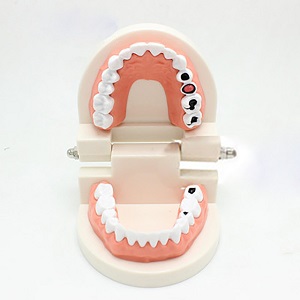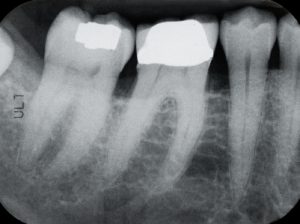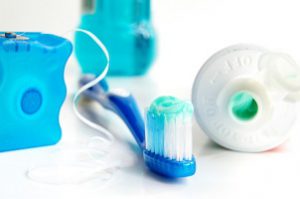Understanding Dental Crowns and Tooth Decay
2018-05-08
Regardless of the circumstances, tooth decay is always a serious concern for dental patients. That said the underlying tooth associated with a  dental crown could easily become damaged by tooth decay just as any other tooth can become damaged in this way. As most people know, a dental crown is typically a restoration type of treatment that is used to protect the underlying real tooth while creating a more natural and attractive appearance. Dental crowns can be cared for in the same way as natural teeth when it comes to hygiene and overall general dental health [1].
dental crown could easily become damaged by tooth decay just as any other tooth can become damaged in this way. As most people know, a dental crown is typically a restoration type of treatment that is used to protect the underlying real tooth while creating a more natural and attractive appearance. Dental crowns can be cared for in the same way as natural teeth when it comes to hygiene and overall general dental health [1].
Susceptible To Cavities
With an incredibly high success rate, dental crowns are more popular today than ever before. Keeping this simple fact in mind it is also important to note that the tooth beneath the crown is still susceptible to cavities and decay. Patients should always maintain a regular routine when it comes to oral hygiene and dental care along with having regular scheduled dental appointments, cleanings and checkups. One important aspect of decay as it relates to dental crowns is in knowing how to detect a problem.
 A Series of X-Rays
A Series of X-Rays
While regular cleanings and visits to your dental care provider will help to ensure that decay never occurs below a crown, there are certain things that can be done to help reduce the chances of this from happening. For example, your dental care provider will take a series of x-rays to determine if the natural tooth lying beneath a dental crown has become damaged [2]. A detailed oral exam is one of the best ways to know for sure if a tooth has become damaged due to decay. As a note, maintaining a healthy diet and avoiding things such as soda and candy can reduce the chances of tooth decay from occurring.
Brushing and Flossing
The chances of experiencing tooth decay under a dental crown can be greatly reduced by considering a few simple concepts. For example, something as easy as brushing and flossing regularly can prevent tooth decay from ever happening. Another key consideration when it comes to avoiding tooth decay underneath a crown is to address the issue of poorly fitted crowns. In some instances if the crown has been fitted in a less-than-perfect fashion, there can be a buildup of bacteria in the space between the crown and the tooth [3]. 
Good Oral Health
This eventually results in decay that is hard to detect unless your dental care provider performs an in-depth examination including x-rays. Not surprisingly, tooth decay occurs underneath crowns more often than most people might imagine. Maintaining good oral health is one of the best ways to avoid this type of decay from occurring. For those with more questions about tooth decay as it relates to dental crowns should consult with their dental care provider to learn more. Contact your Walnut Creek dentist, Dr. Darvishzadeh at Walnut Creek Dental today to have your questions answered about keeping your teeth in the best health possible at all times.
References: [1] Understanding Dental Crowns Basics [2] Dental Composite Filling and Modern Dentistry [3] Exploring the Dental Crown for Dental Implants Option
Subscribe To Our Newsletter
Get Updates And Learn From The Best